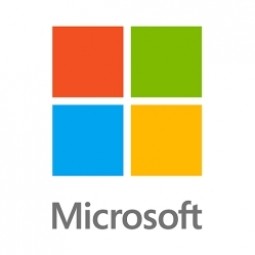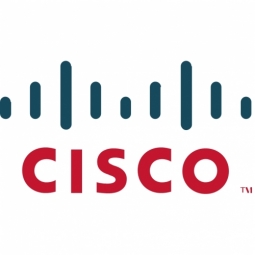Download PDF

Microsoft
Empowering Us All.
Overview
HQ Location
United States
Year Founded
1975
Company Type
Public
Revenue
> $10b
Employees
> 50,000
Website
Stock Ticker
NASDAQ: MSFT
Twitter Handle
Company Description
Microsoft develops, manufactures, licenses, supports and sells computer software, consumer electronics and personal computers and services. Its best known software products are the Microsoft Windows line of operating systems, Microsoft Office office suite, and Internet Explorer and Edge web browsers.
Year Founded: 1975
Revenue: $93.6 billion (2014)
NASDAQ: MSFT
Year Founded: 1975
Revenue: $93.6 billion (2014)
NASDAQ: MSFT
IoT Solutions
The Internet of Things (IoT) does not need to be complicated. It doesn’t have to be about billions or trillions of devices. The Internet of Things is here today, and it’s a practical and applicable technology trend that can generate return on investment (ROI) and drive efficiencies and insights for organizations that know how to use it.
The advancements in connectivity, processing power, form factors, operating systems, and applications, among other technology breakthroughs, are key elements to unlocking value from IoT.
With the Microsoft Azure Internet of Things Suite, companies can monitor assets to improve efficiencies, drive operational performance to enable innovation, and use advance data analytics to transform the business with new business models and revenue streams. Small changes can have a big impact to companies' bottom line. When a company take advantage of the Microsoft Cloud Platform, they can use the Azure IoT Suit to help them move faster, do more, save money, and capture the benefits of the Internet of Things for their business.
The advancements in connectivity, processing power, form factors, operating systems, and applications, among other technology breakthroughs, are key elements to unlocking value from IoT.
With the Microsoft Azure Internet of Things Suite, companies can monitor assets to improve efficiencies, drive operational performance to enable innovation, and use advance data analytics to transform the business with new business models and revenue streams. Small changes can have a big impact to companies' bottom line. When a company take advantage of the Microsoft Cloud Platform, they can use the Azure IoT Suit to help them move faster, do more, save money, and capture the benefits of the Internet of Things for their business.
Key Customers
KUKA, Rockwell Automation, ThyssenKrupp
Subsidiary
IoT Snapshot
Microsoft is a provider of Industrial IoT infrastructure as a service (iaas), platform as a service (paas), application infrastructure and middleware, analytics and modeling, functional applications, cybersecurity and privacy, networks and connectivity, and sensors technologies, and also active in the automotive, buildings, chemicals, cities and municipalities, construction and infrastructure, consumer goods, electronics, equipment and machinery, finance and insurance, food and beverage, healthcare and hospitals, metals, mining, oil and gas, pharmaceuticals, renewable energy, retail, transportation, and utilities industries.
Technologies
Analytics & Modeling
Big Data Analytics
Machine Learning
Computer Vision Software
Data Mining
Digital Twin / Simulation
Edge Analytics
Natural Language Processing (NLP)
Predictive Analytics
Real Time Analytics
Infrastructure as a Service (IaaS)
Cloud Computing
Cloud Databases
Cloud Storage Services
Hybrid Cloud
Cloud Middleware & Microservices
Others
Private Cloud
Public Cloud
Cybersecurity & Privacy
Cloud Security
Intrusion Detection
Malware Protection
Network Security
Security Compliance
Application Security
Identity & Authentication Management
Platform as a Service (PaaS)
Application Development Platforms
Data Management Platforms
Device Management Platforms
Use Cases
Functional Areas
Industries
Services
Technology Stack
Microsoft’s Technology Stack maps Microsoft’s participation in the infrastructure as a service (iaas), platform as a service (paas), application infrastructure and middleware, analytics and modeling, functional applications, cybersecurity and privacy, networks and connectivity, and sensors IoT Technology stack.
-
Devices Layer
-
Edge Layer
-
Cloud Layer
-
Application Layer
-
Supporting Technologies
Technological Capability:
None
Minor
Moderate
Strong
Case Studies.

Case Study
HEINEKEN Uses the Cloud to Reach 10.5 Million Consumers
For 2012 campaign, the Bond promotion, it planned to launch the campaign at the same time everywhere on the planet. That created unprecedented challenges for HEINEKEN—nowhere more so than in its technology operation. The primary digital content for the campaign was a 100-megabyte movie that had to play flawlessly for millions of viewers worldwide. After all, Bond never fails. No one was going to tolerate a technology failure that might bruise his brand.Previously, HEINEKEN had supported digital media at its outsourced datacenter. But that datacenter lacked the computing resources HEINEKEN needed, and building them—especially to support peak traffic that would total millions of simultaneous hits—would have been both time-consuming and expensive. Nor would it have provided the geographic reach that HEINEKEN needed to minimize latency worldwide.

Case Study
Driving Digital Transformations for Vitro Diagnostic Medical Devices
Diagnostic devices play a vital role in helping to improve healthcare delivery. In fact, an estimated 60 percent of the world’s medical decisions are made with support from in vitrodiagnostics (IVD) solutions, such as those provided by Roche Diagnostics, an industry leader. As the demand for medical diagnostic services grows rapidly in hospitals and clinics across China, so does the market for IVD solutions. In addition, the typically high cost of these diagnostic devices means that comprehensive post-sales services are needed. Wanteed to improve three portions of thr IVD:1. Remotely monitor and manage IVD devices as fixed assets.2. Optimizing device availability with predictive maintenance.3. Recommending the best IVD solution for a customer’s needs.
Similar Suppliers.

Supplier
Cisco
Cisco designs and sells broad lines of products, provides services, and delivers integrated solutions to develop and connect networks around the world, building the Internet. Over the last 30 plus years, they have been the world’s leader in connecting people, things, and technologies - to each other and to the Internet - realizing their vision of changing the way the world works, lives, plays, and learns.Today, Cisco has over 70,000 employees in over 400 offices worldwide who design, produce, sell, and deliver integrated products, services, and solutions. Over time, they have expanded to new markets that are a natural extension of their core networking business, as the network has become the platform for automating, orchestrating, integrating, and delivering an ever-increasing array of information technology (IT)–based products and services.Subsidiaries/ Business Units: - Jasper - OpenDNS - CloudLock

Supplier
IBM
IBM is an American multinational technology and consulting corporation that manufactures and markets computer hardware, middleware, and software, and offers infrastructure, hosting, and consulting services in areas ranging from mainframe computers to nanotechnology. IBM is intent on leading the development of a global data field.







